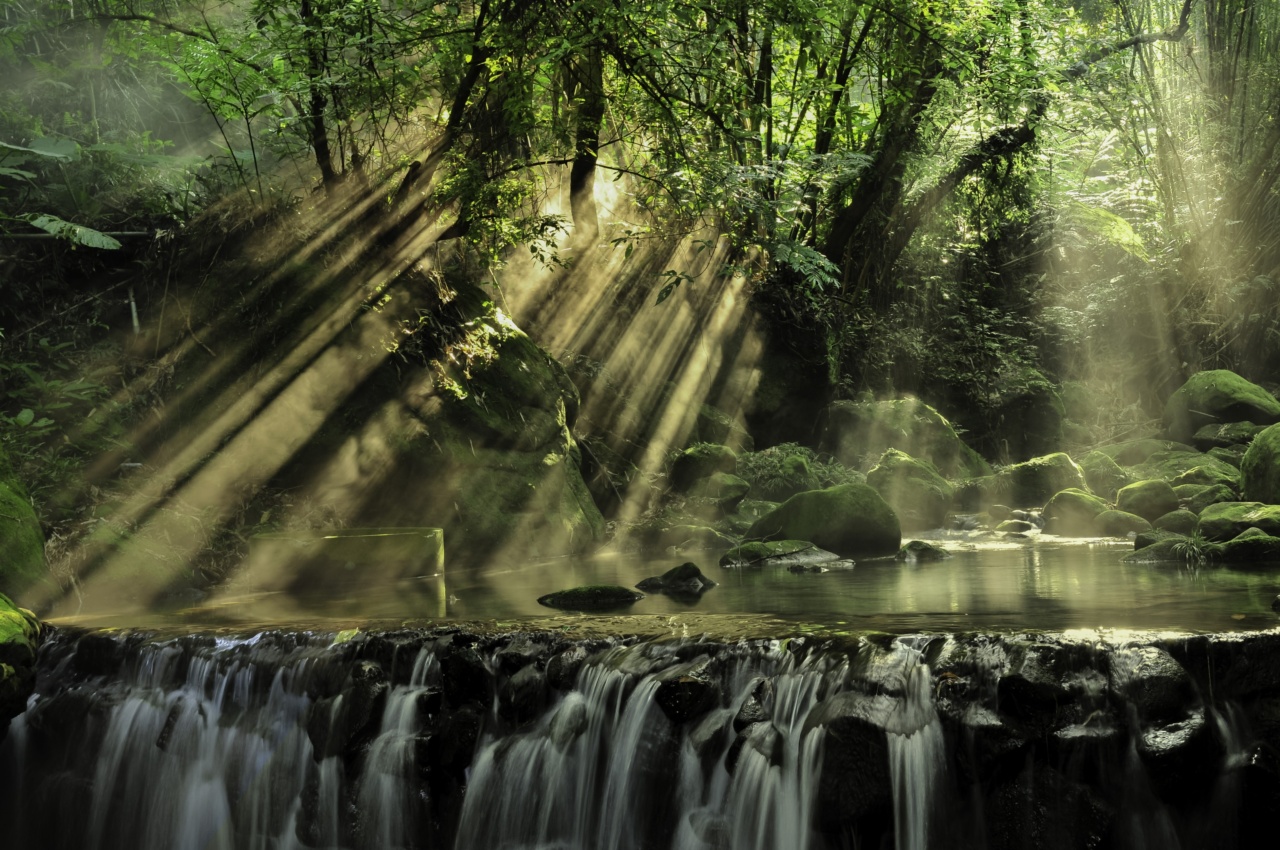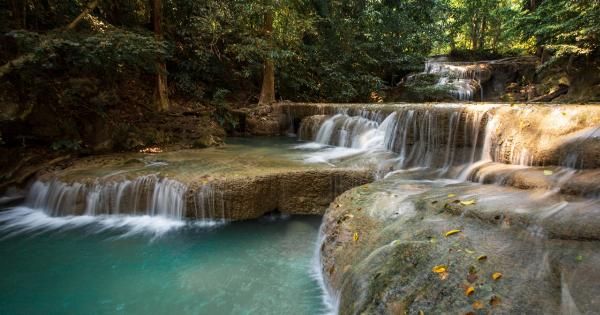Waterfalls are not only breathtaking natural wonders but also energetic forces of nature. They can bring tranquility, add beauty to landscapes, and provide habitats for various aquatic creatures.
However, just like any other natural feature, waterfalls require care and attention to maintain their charm and functionality. In some cases, intervention is necessary to prevent negative impacts on the waterfall’s ecosystem, ensure safety, and manage any potential ecological imbalances.
This article will explore different scenarios that may call for intervention and provide insights into the steps to take when faced with these situations.
1. Controlling Erosion
Erosion is a natural process that can significantly impact the stability and aesthetic appeal of waterfalls.
Over time, the force of falling water and the constant flow can erode the surrounding rocks, soil, and vegetation, leading to instability and potential collapse. To prevent erosion and ensure the longevity of a waterfall, timely intervention is crucial.
One effective way to control erosion is by strategically placing rocks and boulders around the base of the waterfall to act as barriers. These barriers help redirect the flow of water and minimize its impact on the surrounding landscape.
Vegetation can also play a vital role in erosion control. Planting native plants and shrubs in the vicinity of the waterfall can stabilize the soil and provide additional protection against erosion.
2. Clearing Debris
A buildup of debris, such as fallen branches, leaves, and trash, can detract from the natural beauty of waterfalls. Moreover, it can impede the smooth flow of water, contributing to blockages and potential flooding.
Regularly removing debris from the waterfall and its surroundings is essential to maintain its aesthetics and functionality.
When cleaning a waterfall, it is important to be careful and gentle to avoid damaging any delicate plant life or disturbing the natural balance of the ecosystem.
Manual removal of debris using hand tools like rakes or nets is usually the safest approach. Ensuring that the removed debris is properly disposed of also helps preserve the cleanliness and ecological integrity of the waterfall and its surrounding areas.
3. Addressing Sedimentation
Sedimentation, the deposition of sediment at the base of a waterfall, can gradually fill in pools and alter the overall appearance of the feature.
Excessive sedimentation can also disrupt the delicate habitat of aquatic organisms living in and around the waterfall. Regular checks and appropriate intervention are necessary to address sedimentation and maintain the natural balance.
One way to mitigate sedimentation is by creating small but strategically placed dams upstream. These dams reduce the flow of sediment-laden water, allowing the sediment to settle before reaching the waterfall.
Regular removal of accumulated sediment from the bottom of the pools or basins can also be part of the intervention strategy to preserve the desired aesthetics of the waterfall.
4. Preventing Algae and Weed Growth
Waterfalls are often vulnerable to the growth of algae and invasive aquatic plants, which can quickly cover rocks, change the water’s color, and disrupt the ecosystem.
To preserve the beauty and ecological balance of the waterfall, controlling algae and weed growth is crucial.
Proper filtration and aeration systems can help limit nutrient availability and discourage excessive growth of algae and aquatic plants.
Regular inspection and removal of any visible algae or weeds, as well as taking measures to improve water quality such as increasing oxygenation or pH adjustments, may also be necessary. Applying eco-friendly algicides or herbicides can be considered, but caution should be exercised to prevent harm to other organisms present in the waterfall’s ecosystem.
5. Repairing Damages
Waterfalls can be subject to various natural forces, including extreme weather events, vandalism, or adjacent construction activities, which can lead to damage.
Prompt intervention is essential to address and repair any damage to preserve the waterfall’s structural integrity and beauty.
The specific repair methods will vary depending on the extent and type of damage. In some cases, it may require professional expertise to ensure the best possible outcome.
Common repair techniques include repositioning rocks, reinforcing weak areas, and restoring the natural flow of water. It is important to consult with experts and professionals experienced in waterfall restoration and repair to ensure the most effective and sustainable solutions.
6. Managing Water Flow
The flow rate and volume of water in a waterfall are vital factors in maintaining its visual appeal and functionality.
In certain situations, modifying or redirecting the water flow may become necessary to improve aesthetics or address any potential concerns.
For instance, during periods of drought, the flow of water in a waterfall may reduce significantly, leading to an unattractive trickle or even complete drying up.
Intervention can involve diverting water from other sources or implementing small-scale irrigation systems to maintain an adequate flow. On the other hand, excessive water flow can cause erosion, flooding, or safety issues. In such cases, constructing diversion channels or installing barriers can help manage the flow and prevent any adverse consequences.
7. Ensuring Safety
Safety should always be a top priority when considering intervention in waterfalls. As popular natural attractions, waterfalls can draw large crowds, and ensuring visitor safety is crucial.
Intervention measures may include the installation of barriers or fences to prevent access to hazardous areas, providing clear signage with safety instructions, and conducting regular safety inspections.
In some cases, clearance of vegetation or debris that obstructs visibility may also be necessary for improved safety. Collaborating with local authorities and experts can help design and implement effective safety measures while preserving the natural beauty of the waterfall.
8. Conserving Water Resources
Water scarcity is a global concern, and responsible water management is essential to conserve this precious resource, even within naturally flowing waterfalls.
Within intervention plans, allocating water resources efficiently and sustainably becomes a crucial component.
Installing water monitoring systems can help assess the available water resources and track consumption patterns.
Implementing water-saving measures such as recycling or reusing water, implementing rainwater harvesting systems, or using alternative water sources can contribute to the conservation efforts. Education and awareness programs can also play a role in encouraging visitors to practice water conservation while enjoying the beauty of waterfalls.
9. Monitoring Water Quality
Maintaining good water quality is vital for the health of aquatic organisms and overall ecosystem balance.
Monitoring water quality parameters regularly and intervening when necessary can help preserve the wellbeing of the waterfall and its inhabitants.
Water quality tests, including pH, dissolved oxygen, and nutrient levels, can provide insights into the conditions that impact the health of aquatic life.
Implementing appropriate water treatment measures, such as adding beneficial bacteria or using eco-friendly filtration systems, can help mitigate any water quality issues. Regular inspections and prompt action can prevent the deterioration of water quality and safeguard the overall ecosystem.
10. Engaging Community Involvement
Engaging the local community and visitors is essential in promoting responsible waterfall management and intervention.
By creating awareness about the significance of waterfalls and the need for their preservation, community involvement can lead to the development of collective responsibility and the implementation of effective intervention measures.
Organizing educational programs, volunteer cleanup events, and nature walks can foster a sense of appreciation and care for waterfalls.
Encouraging visitors to follow Leave No Trace principles, avoid littering, and report any incidents or concerns can help maintain the ecological balance and minimize the need for extensive interventions.
Conclusion
Waterfalls are awe-inspiring natural wonders that require careful management and occasional intervention to maintain their beauty and ecological balance.
From controlling erosion to ensuring safety and preserving water resources, the reasons to intervene with waterfalls are diverse. By understanding when and how to intervene, we can help safeguard these captivating features for future generations to enjoy.































